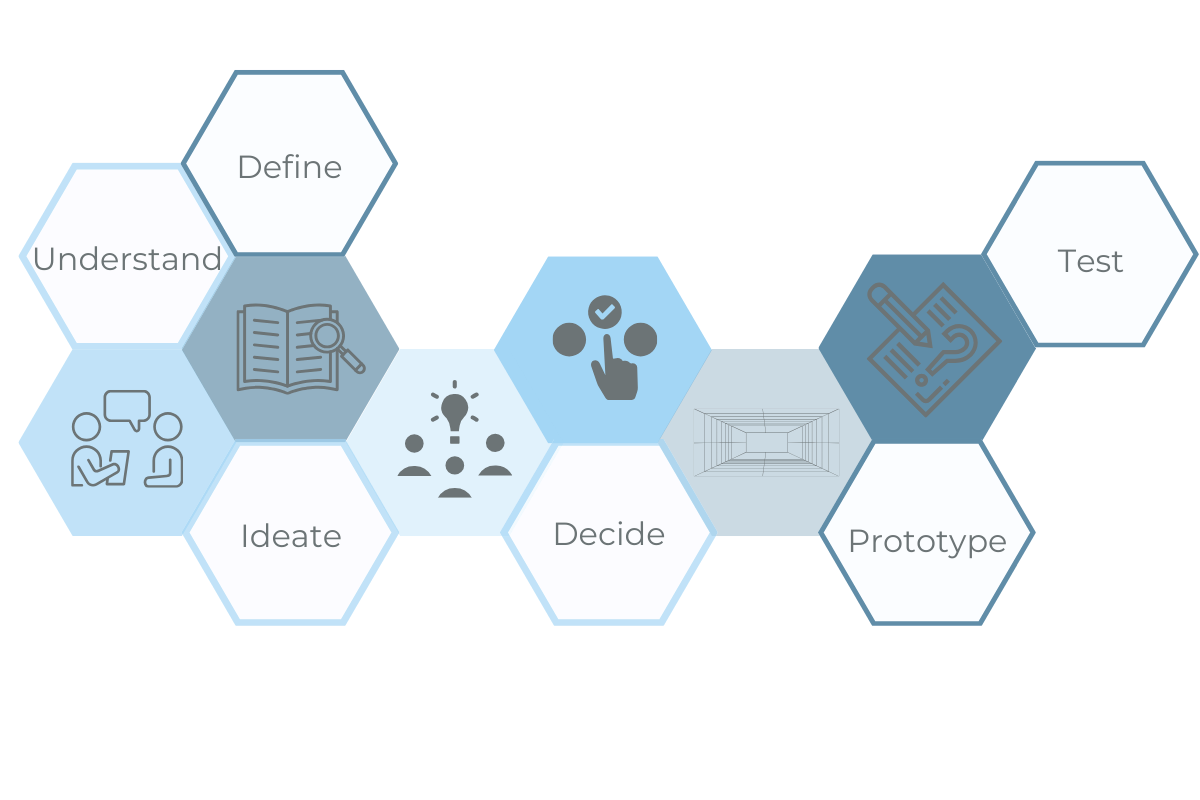Design Sprint Basics for Lawyers

Lawyers are no strangers to complex legal problems or the diligent research and analysis it takes to solve them. As law firm leaders, we apply a similar approach to the goals and challenges typical of law firm life, such as siloed practice groups, strategic planning, and business development efforts. Solutions to those challenges, however, often fall victim to endless debates cycles and entrenched beliefs about the way law firms should operate. How can law firms overcome those issues and find solutions that work for them? Enter design sprints.
Unlocking Innovation
Design sprints are a powerful methodology that can transform the way law firms implement change. They empower law firms to make better decisions – faster – by fostering collaboration, prioritizing people’s needs, and leveraging the knowledge and expertise of those within the firm.
What are Design Sprints?
Design sprints are intensive workshop sessions designed to solve complex problems through rapid generation of ideas and prototype potential solutions in a condensed timeframe – usually 5 days or less. The Design Sprint is a methodology invented by Jake Knapp and colleagues at Google Ventures. But design sprints are not just for scrappy tech startups. They’re for any business looking for ways to “solve big problems and test new ideas in just 5 days” as proclaimed on the cover of Knapp’s book “Sprint.” Note: There is now a Knapp-tested and approved 4-day version.

The Basic Design Sprint Framework
Understand: At the beginning of every design sprint, the team develops empathy for the people impacted by the challenge. The team conducts interviews with those people and also hears from subject-matter experts to understand more about the nature of the challenge.
Example: Improving client intake
The sprint team might interview:
- The business office manager
- Existing clients
- Business development manager
Define: After synthesizing the information gathered in the Understand phase, the sprint team considers the specific challenge to focus on during the sprint. The decision maker (perhaps a managing partner or other law firm leader) chooses which challenge the sprint will address and the team crafts a concise problem statement that will guide the rest of the sprint.
The managing partner decides that the most important challenge to address is efficient communication with the potential client during the intake process.
Ideate: Time to get creative! In this phase, the team generates a wide range of ideas and potential solutions. The mantra for this phase is “quantity over quality.” The wildest ideas can often spark an actionable solution.
After brainstorming and voting, the sprint team identifies a few promising concepts: a client portal, automated communications; and a website chatbot. The managing partner chooses the client portal concept.
Prototype: The team turns the chosen concept into a prototype. These prototypes are rough and low-fidelity. This step is done in one day.
The sprint team uses PowerPoint to mockup the portal screens. A “click” will move the user to the next “screen.”
Test: Now is the moment the team has been waiting for. On the final day of the sprint, the team tests the prototypes with real users or stakeholders to gather feedback and validate (or invalidate) assumptions. This feedback informs further iteration and refinement of the solutions.
The team has recruited a handful of existing clients who are willing to participate in the testing. One sprint team member walks the client through the screens representing the portal. The team observes and take notes about what the clients say, what they like and dislike.
The Final Verdict:
The team is excited because all of the testers raved about the portal. The firm is happy because they’ve found a solution without having to risk huge investments of time or resources.
But what if the clients didn’t like it at all? That is still a “win” for the sprint. Why? The law firm avoided developing a service clients didn’t want to use. There could also be a happy medium. The testers may like the idea but have thoughts about what would make it better. Time for another sprint!!
How Design Sprints Benefit Law Firms
As in the example above, law firms will realize multiple benefits from implementing design sprints (including our version, the LegalSprint.™️
Stay Ahead of the Competition
Design sprints offer a structured time-bound approach to problem-solving, allowing law firms to tackle complex issues efficiently. By keeping the timeline short, law firms can expedite solutions and stay ahead of the competition.
Client-Focused
The emphasis on empathy and understanding the needs of the people involved aligns perfectly with the client-centric approach law firms strive for. By involving clients (and other people) in the process, law firms gain valuable insights into their needs and preferences. Just asking a client to participate could be enough to building stronger relationships and client loyalty.
Risk Mitigation
Rapid prototyping and testing enable law firms to identify potential pitfalls, reveal incorrect assumptions, and refine solutions before fully committing resources.
Ready to Sprint?
Our free guide is filled with the tips, advice, and guidance your law firm needs to get started.
